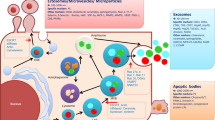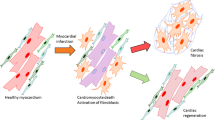Abstract
Recently, cell sheet engineering has emerged as one of the most accentuated approaches of tissue engineering and cardiac tissue is the pioneering application area of cell sheets with clinical use. In this study, we cultured rat cardiomyoblasts (H9C2 cell line) to obtain cell sheets by using three different approaches; using (1) thermo-responsive tissue culture plates, (2) high cell seeding density/high serum content and (3) ascorbic acid treatment. To compare the outcomes of three methods, morphologic examination, immunofluorescent stainings and live/dead cell assay were performed and the effects of serum concentration and ascorbic acid treatment on cardiac gene expressions were examined. The results showed that cardiomyoblast sheets were successfully obtained in all approaches without losing their integrity and viability. Also, the results of RT-PCR analysis showed that the types of tissue culture surface, cell seeding density, serum concentration and ascorbic acid treatment affect cardiac gene expressions of cells in cell sheets. Although three methods were succeeded, ascorbic acid treatment was found as the most rapid and effective method to obtain cell sheets with cardiac characteristics.







Similar content being viewed by others
References
Bel A, Planat-Bernard V, Saito A, Bonnevie L, Bellamy V et al (2010) Composite cell sheets: a further step toward safe and effective myocardial regeneration by cardiac progenitors derived from embryonic stem cells. Circulation 122:118–123
Chen CH, Chang Y, Wang CC, Huang CH, Huang CC, Yeh YC, Hwang SM, Sung HW (2007) Construction and characterization of fragmented mesenchymal-stem-cell sheets for intramuscular injection. Biomaterials 28:4643–4651
Choi YC, Morris GM, Lee FS, Sokoloff L (1980) The effect of serum on monolayer cell culture of mammalian articular chondrocytest. Connect Tissue Res 7:105–112
Cui H, Liu Y, Cheng Y, Zhang Z, Zhang P, Chen X, Wei Y (2014) In vitro study of electroactive tetraaniline-containing thermosensitive hydrogels for cardiac tissue engineering. Biomacromolecules 15:1115–1123
Cui H, Miao S, Esworthy T, Zhou X, Lee S-J, Liu C, Yu Z-X, Fisher JP, Mohiuddin M, Zhang LG (2018) 3D bioprinting for cardiovascular regeneration and pharmacology. Adv Drug Deliv Rev 132:252–269
Dergilev KV, Makarevich PI, Tsokolaeva ZI, Boldyreva MA, Beloglazova IB, Zubkova ES, Menshikov MY, Parfyonova YV (2017) Comparison of cardiac stem cell sheets detached by Versene solution and from thermoresponsive dishes reveals similar properties of constructs. Tissue Cell 49:64–71
Dergilev K, Tsokolaeva Z, Makarevich P, Beloglazova I, Zubkova E, Boldyreva M, Ratner E, Dyikanov D, Menshikov M, Ovchinnikov A, Ageev F, Parfyonova Y (2018) C-kit cardiac progenitor cell based cell sheet improves vascularization and attenuates cardiac remodeling following myocardial infarction in rats. BioMed Res Int 2018, 3536854. https://doi.org/10.1155/2018/3536854
Dott W, Mistry P, Wright J, Cain K, Herbert KE (2014) Modulation of mitochondrial bioenergetics in a skeletal muscle cell line model of mitochondrial toxicity. Redox Biol 2:224–233
Feridooni T, Mac Donald C, Shao D, Yeung P, Agu RU (2013) Cytoprotective potential of anti-ischemic drugs against chemotherapy-induced cardiotoxicity in H9C2 myoblast cell line. Acta Pharm 63:493–503
Furuta A, Miyoshi S, Itabashi Y, Shimizu T, Kira S et al (2006) Pulsatile cardiac tissue grafts using a novel three-dimensional cell sheet manipulation technique functionally integrates with the host heart, in vivo. Circ Res 98:705–712
Grinnell F, Fukamizu H, Pawelek P, Nakagawa S (1989) Collagen processing, crosslinking, and fibril bundle assembly in matrix produced by fibroblasts in long-term cultures supplemented with ascorbic acid. Exp Cell Res 181:483–491
Guo P, Zeng JJ, Zhou N (2015) A novel experimental study on the fabrication and biological characteristics of canine bone marrow mesenchymal stem cells sheet using vitamin C. Scanning 37:42–48
Hakimi O, Poulson R, Thakkar D, Yapp C, Carr A (2014) Ascorbic acid is essential for significant collagen deposition by human tenocytes in vitro. Oxid Antioxid Med Sci 3:119–127
Haraguchi Y, Shimizu T, Yamato M, Kikuchi A, Okano T (2006) Electrical coupling of cardiomyocyte sheets occurs rapidly via functional gap junction formation. Biomaterials 27:4765–4774
Haraguchi Y, Shimizu T, Sasagawa T, Sekine H, Sakaguchi K et al (2012) Fabrication of functional three-dimensional tissues by stacking cell sheets in vitro. Nat Protoc 7:850–858
Hata H, Matsumiya G, Miyagawa S, Kondoh H, Kawaguchi N et al (2006) Grafted skeletal myoblast sheets attenuate myocardial remodeling in pacing-induced canine heart failure model. J Thorac Cardiovasc Surg 132:918–924
Hoashi T, Matsumiya G, Miyagawa S, Ichikawa H, Ueno T et al (2009) Skeletal myoblast sheet transplantation improves the diastolic function of a pressure-overloaded right heart. J Thorac Cardiovasc Surg 138:460–467
Hong Y, Yu M, Weng W, Cheng K, Wang H, Lin J (2013) Light-induced cell detachment for cell sheet technology. Biomaterials 34:11–18
Huang CH, Chen HW, Tsai MS, Hsu CY, Peng RH et al (2009) Antiapoptotic cardioprotective effect of hypothermia treatment against oxidative stress injuries. Acad Emerg Med 16:872–880
Itabashi Y, Miyoshi S, Kawaguchi H, Yuasa S, Tanimoto K et al (2005) A New method for manufacturing cardiac cell sheets using fibrin-coated dishes and its electrophysiological studies by optical mapping. Artif Organs 29:95–103
Ivanyuk D, Budash G, Zheng Y, Gaspar JA, Chaudhari U et al (2015) Ascorbic acid-induced cardiac differentiation of murine pluripotent stem cells: transcriptional profiling and effect of a small molecule synergist of wnt/β-catenin signaling pathway. Cell Physiol Biochem 36:810–830
Jadaun P, Yadav D, Bisen PS (2018) Spirulina platensis prevents high glucose-induced oxidative stress mitochondrial damage mediated apoptosis in cardiomyoblasts. Cytotechnology 70:523–536
Kato S, Shanley JR, Fox JC (1996) Serum stimulation, cell-cell interactions, and extracellular matrix independently influence smooth muscle cell phenotype in vitro. Am J Pathol 149:687–697
Kawamura M, Miyagawa S, Miki K, Saito A, Fukushima S et al (2012) Feasibility, safety, and therapeutic efficacy of human induced pluripotent stem cell-derived cardiomyocyte sheets in a porcine ischemic cardiomyopathy model. Circulation 126:29–37
Kondoh H, Sawa Y, Miyagawa S, Sakakida-Kitagawa S, Memon IA et al (2006) Longer preservation of cardiac performance by sheet-shaped myoblast implantation in dilated cardiomyopathic hamsters. Cardiovasc Res 69:466–475
Koo MA, Lee MH, Kwon BJ, Seon GM, Kim MS, Kim D, Nam KC, Park JC (2018) Exogenous ROS-induced cell sheet transfer based on hematoporphyrin-polyketone film via a one-step process. Biomaterials 161:47–56
Law CH, Li JM, Chou HC, Chen YH, Chan HL (2013) Hyaluronic acid-dependent protection in H9C2 cardiomyocytes: a cell model of heart ischemia–reperfusion injury and treatment. Toxicology 303:54–71
Leung GP, Tse CM, Man RY (2007) Characterization of adenosine transport in H9C2 cardiomyoblasts. Int J Cardiol 116:186–193
L’Heureux N, Pâquet S, Labbé R, Germain L, Auger FA (1998) A completely biological tissue-engineered human blood vessel. FASEB J 12:47–56
Martinez EC, Wang J, Gan SU, Singh R, Lee CN, Kofidis T (2010) Ascorbic acid improves embryonic cardiomyoblast cell survival and promotes vascularization in potential myocardial grafts in vivo. Tissue Eng Part A 16:1349–1361
Matsuda N, Shimizu T, Yamato M, Okano T (2007) Tissue engineering based on cell sheet technology. Adv Mater 19:3089–3099
Mejia-Alvarez R, Tomaselli CF, Marban E (1994) Simultaneous expression of cardiac and skeletal muscle isoforms of the L-type Ca2+ channel in a rat heart muscle cell line. J Physiol 478:315–329
Memon IA, Sawa Y, Fukushima N, Matsumiya G, Miyagawa S et al (2005) Repair of impaired myocardium by means of implantation of engineered autologous myoblast sheets. J Thorac Cardiovasc Surg 130:1333–1341
Menard C, Pupier S, Mornet D, Kitzmann M, Nargeot J, Lory P (1999) Modulation of L-type calcium channel expression during retinoic acid-induced differentiation of H9C2 cardiac cells. J Biol Chem 274:29063–29070
Miyahara Y, Nagaya N, Kataoka M, Yanagawa B, Tanaka K et al (2006) Monolayered mesenchymal stem cells repair scarred myocardium after myocardial infarction. Nat Med 12:459–465
Narayanan AS, Page RC, Swanson J (1989) Collagen synthesis by human fibroblasts regulation by transforming growth factor-β in the presence of other inflammatory mediators. Biochem J 260:463–469
Pereira SL, Ramalho-Santos J, Branco AF, Sardão VA, Oliveira PJ, Carvalho RA (2011) Metabolic remodeling during H9C2 myoblast differentiation: relevance for in vitro toxicity studies. Cardiovasc Toxicol 11:180–190
Ricotti L, Polini A, Genchi GG, Ciofani G, Iandolo D et al (2012) Proliferation and skeletal myotube formation capability of C2C12 and H9c2 cells on isotropic and anisotropic electrospun nanofibrous PHB scaffolds. Biomed Mater 7, 035010. https://doi.org/10.1088/1748-6041/7/3/035010
Rodgers BD, Interlichia JP, Garikipati DK, Mamidi R, Chandra M et al (2009) Myostatin represses physiological hypertrophy of the heart and excitation–contraction coupling. J Physiol 587:4873–4886
Sekine H, Shimizu T, Hobo K, Sekiya S, Yang J et al (2008) Endothelial cell coculture within tissue-engineered cardiomyocyte sheets enhances neovascularization and improves cardiac function of ischemic hearts. Circulation 118:145–152
Sekine H, Shimizu T, Dobashi I, Matsuura K, Hagiwara N et al (2011) Cardiac cell sheet transplantation improves damaged heart function via superior cell survival in comparison with dissociated cell ınjection. Tissue Eng Part A 17:2973–2980
Shimizu K, Ito A, Lee JK, Yoshida T, Miwa K et al (2007) Construction of multi-layered cardiomyocyte sheets using magnetite nanoparticles and magnetic force biotechnology and bioengineering. Biotechnol Bioeng 96:803–809
Tao H, Nuo M, Min S (2018) Sufentanil protects the rat myocardium against ischemia–reperfusion injury via activation of the ERK1/2 pathway. Cytotechnology 70:169–176
Watkins SJ, Borthwick GM, Arthur HM (2011) The H9C2 cell line and primary neonatal cardiomyocyte cells show similar hypertrophic responses in vitro. Vitro Cell Dev Biol Anim 47:125–131
Wei FL, Qu CY, Song TL, Ding G, Fan ZP et al (2012) Vitamin C treatment promotes mesenchymal stem cell sheet formation and tissue regeneration by elevating telomerase activity. J Cell Physiol 227:3216–3224
Witek P, Korga A, Burdan F, Ostrowska M, Nosowska B et al (2016) The effect of a number of H9C2 rat cardiomyocytes passage on repeatability of cytotoxicity study results. Cytotechnology 68:2407–2415
Yamato M, Okano T (2004) Cell sheet engineering. Mater Today 7:42–47
Yeh TS, Fang YHD, Lu CH, Chiu SC, Yeh CL et al (2014) Baculovirus-transduced, VEGF-expressing adipose-derived stem cell sheet for the treatment of myocardium infarction. Biomaterials 35:174–184
Yu J, Tu YK, Tang YB, Cheng NC (2014) Stemness and transdifferentiation of adipose-derived stem cells using L-ascorbic acid 2-phosphate-induced cell sheet formation. Biomaterials 35:3516–3526
Zahn R, Thomasson E, Guillaume-Gentil O, Vörös J, Zambelli T (2012) Ion-induced cell sheet detachment from standard cell culture surfaces coated with polyelectrolytes. Biomaterials 33:3421–3427
Zhang H, Yu N, Zhou Y, Ma H, Wang J et al (2016) Construction and characterization of osteogenic and vascular endothelial cell sheets from rat adipose-derived mesenchymal stem cells. Tissue Cell 48:488–495
Zhou T, Zhou Z, Zhou S, Huang F (2016) Real-time monitoring of contractile properties of H9C2 cardiomyoblasts by using a quartz crystal microbalance. Anal Methods 8:488–495
Acknowledgements
This study was financially supported by The Hacettepe University Scientific Research Projects Coordination Unit Project No. FBA-2017-16248. The authors would like to thank Selin Gümüşderelioğlu for English editing of text language.
Author information
Authors and Affiliations
Corresponding author
Ethics declarations
Conflict of interest
The authors declare that they have no conflict of interest.
Additional information
Publisher's Note
Springer Nature remains neutral with regard to jurisdictional claims in published maps and institutional affiliations.
Electronic supplementary material
Below is the link to the electronic supplementary material.
Rights and permissions
About this article
Cite this article
Kaynak Bayrak, G., Gümüşderelioğlu, M. Construction of cardiomyoblast sheets for cardiac tissue repair: comparison of three different approaches. Cytotechnology 71, 819–833 (2019). https://doi.org/10.1007/s10616-019-00325-2
Received:
Accepted:
Published:
Issue Date:
DOI: https://doi.org/10.1007/s10616-019-00325-2




